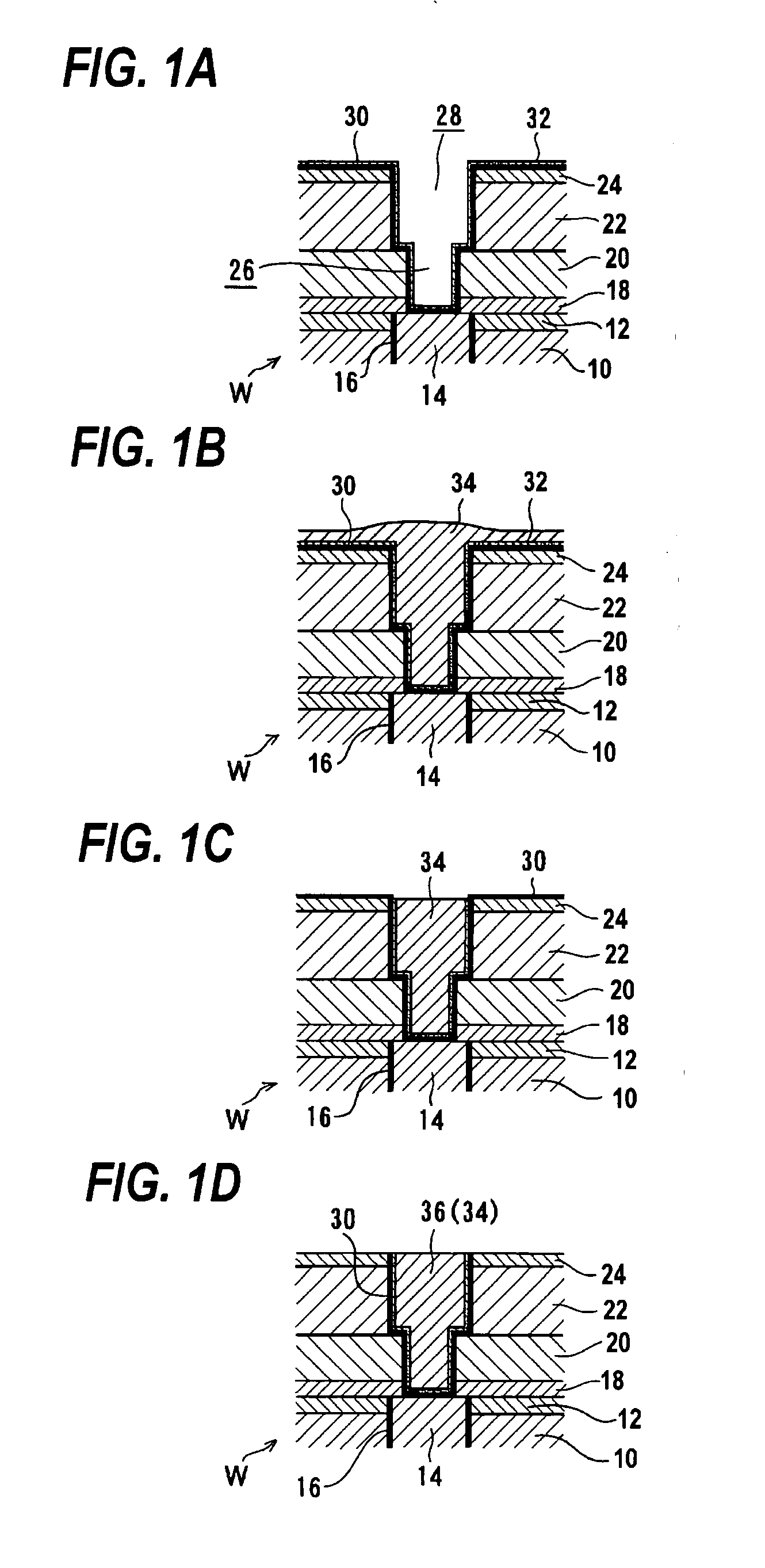Electrolytic liquid for electrolytic polishing and electrolytic polishing method
a technology of electrolysis and electrolysis liquid, which is applied in the direction of manufacturing tools, electric circuits, electric circuit machining, etc., can solve the problems of increased defects in the processed surface, roughened processed surface, and high processing rate, so as to prevent excessive polishing, improve processing efficiency, and improve processing efficiency
- Summary
- Abstract
- Description
- Claims
- Application Information
AI Technical Summary
Benefits of technology
Problems solved by technology
Method used
Image
Examples
Embodiment Construction
[0071] Preferred embodiments of the present invention will now be described with reference to the drawings. The following description illustrates the case of removing an unnecessary portion of a copper film (including a seed film) as an interconnect material, formed on a barrier film of a substrate as a polishing object, thereby exposing the barrier film.
[0072]FIG. 2 is a plan view showing an electrolytic polishing apparatus, and FIG. 3 is a vertical sectional front view of the apparatus. This electrolytic polishing apparatus can be used to polish, for example, a substrate (polishing object) W, as shown in FIG. 1B, which has been prepared by carrying out copper plating on a surface of the substrate shown in FIG. 1A, thereby filling copper 34 as an interconnect metal into via holes 26 and trenches 28 as interconnect recesses and depositing copper 34 on a hard mask 24. Polishing of the substrate surface is carried out to remove the copper (conductive material) 34 (and seed film 32) o...
PUM
| Property | Measurement | Unit |
|---|---|---|
| electric conductivity | aaaaa | aaaaa |
| pH | aaaaa | aaaaa |
| pKa | aaaaa | aaaaa |
Abstract
Description
Claims
Application Information
 Login to View More
Login to View More - R&D
- Intellectual Property
- Life Sciences
- Materials
- Tech Scout
- Unparalleled Data Quality
- Higher Quality Content
- 60% Fewer Hallucinations
Browse by: Latest US Patents, China's latest patents, Technical Efficacy Thesaurus, Application Domain, Technology Topic, Popular Technical Reports.
© 2025 PatSnap. All rights reserved.Legal|Privacy policy|Modern Slavery Act Transparency Statement|Sitemap|About US| Contact US: help@patsnap.com



